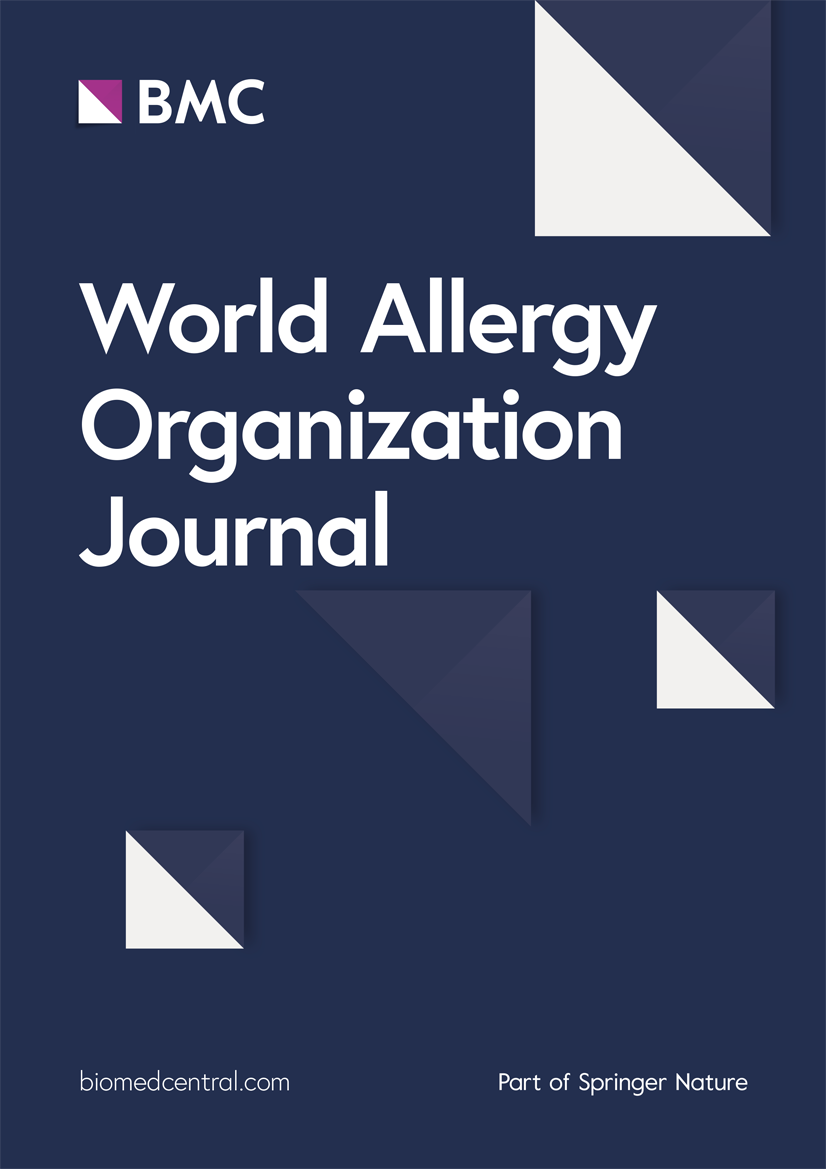A preliminary investigation of the differences in immune responses in different strains of mice with localized allergic rhinitis tolerance models
IF 4.3
2区 医学
Q2 ALLERGY
引用次数: 0
Abstract
Objectives
This study aimed to compare systematically strain-specific immune differences between BALB/c and C57BL/6 mice in a local tolerance model and explore the underlying mechanisms.
Methods
BALB/c and C57BL/6 mice received daily intranasal ovalbumin (OVA; 25 mg/ml, 10μl/nostril) or PBS for 15 weeks. Systemic responses (serum OVA-specific IgE, IgG1, IgG2a; splenocyte cytokine secretion: IL-4, IL-10, IFN-γ) and local nasal responses (symptoms, histopathology: polymorphonuclear/goblet cell infiltration; immunohistochemistry: TGF-β, IL-10, eotaxin; RNA-seq transcriptomics of nasal mucosa) were assessed at the 8th and 15th weeks.
Results
BALB/c mice initially exhibited worsening nasal symptoms, which was followed by significant alleviation. In contrast, C57BL/6 mice showed a significant worsening of symptoms. Serum levels of IgE, IgG1, and IgG2a increased significantly over time in BALB/c mice. In C57BL/6 mice, serum IgE and IgG1 levels also increased significantly, while IgG2a levels showed no significant changes. In splenocyte supernatants, BALB/c mice showed IL-4 levels that initially increased significantly but later decreased significantly, whereas IL-10 levels were significantly elevated and sustained. Conversely, C57BL/6 mice exhibited no significant changes in these splenocyte cytokines. Within nasal mucosa, BALB/c mice displayed polymorphonuclear cell infiltration and significantly elevated eotaxin levels, which subsequently stabilized, alongside significant upregulation of TGF-β and IL-10 expression. At 15th week, C57BL/6 mice demonstrated significantly higher nasal PMN infiltration and eotaxin levels compared to BALB/c mice, but showed no significant increase in TGF-β or IL-10 compared to controls. RNA-seq analysis of nasal mucosa revealed that BALB/c mice at 15th week exhibited significant upregulation of genes involved in biological processes, tolerance-related signaling pathways, and negative regulatory pathways. Conversely, C57BL/6 mice showed significant upregulation of genes associated with cell synthesis- and secretion-related pathways.
Conclusion
Based on the criteria defining “local tolerance” in this model—significant symptom attenuation despite allergen escalation coupled with downregulation of nasal inflammatory markers (eotaxin, polymorphonuclear cell infiltration)—local tolerance was successfully induced in BALB/c mice by long-term OVA stimulation, but not in C57BL/6 mice. The normal function of T regulatory cells is key to establishing local tolerance.
不同品系小鼠局部变应性鼻炎耐受模型免疫应答差异的初步研究
目的系统比较BALB/c和C57BL/6小鼠在局部耐受模型下的株特异性免疫差异,并探讨其机制。方法balb /c和C57BL/6小鼠每日经鼻注射卵白蛋白(OVA, 25 mg/ml, 10μl/鼻孔)或PBS,连续15周。在第8周和第15周评估全身反应(血清ova特异性IgE、IgG1、IgG2a;脾细胞细胞因子分泌:IL-4、IL-10、IFN-γ)和局部鼻腔反应(症状、组织病理学:多形核/杯状细胞浸润;免疫组织化学:TGF-β、IL-10、eotaxin;鼻黏膜RNA-seq转录组学)。结果balb /c小鼠最初表现为鼻症状加重,随后症状明显缓解。相比之下,C57BL/6小鼠表现出明显的症状恶化。BALB/c小鼠血清中IgE、IgG1和IgG2a水平随时间显著升高。C57BL/6小鼠血清IgE和IgG1水平也显著升高,而IgG2a水平无明显变化。在脾细胞上清液中,BALB/c小鼠IL-4水平先显著升高后显著降低,而IL-10水平则显著升高并持续。相反,C57BL/6小鼠的这些脾细胞因子没有明显变化。在鼻黏膜内,BALB/c小鼠出现多形核细胞浸润,eotaxin水平显著升高,随后趋于稳定,TGF-β和IL-10表达显著上调。在第15周,C57BL/6小鼠的鼻腔PMN浸润和eotaxin水平明显高于BALB/c小鼠,但TGF-β和IL-10水平与对照组相比无显著升高。鼻黏膜RNA-seq分析显示,BALB/c小鼠在第15周时表现出参与生物过程、耐受相关信号通路和负调控通路的基因显著上调。相反,C57BL/6小鼠显示与细胞合成和分泌相关通路相关的基因显著上调。结论根据该模型中定义“局部耐受”的标准——尽管过敏原增加,鼻腔炎症标志物(eotaxin,多形核细胞浸润)下调,但症状明显减轻——BALB/c小鼠通过长期卵细胞刺激成功诱导了局部耐受,而C57BL/6小鼠则没有。T调节细胞的正常功能是建立局部耐受的关键。
本文章由计算机程序翻译,如有差异,请以英文原文为准。
求助全文
约1分钟内获得全文
求助全文
来源期刊

World Allergy Organization Journal
Immunology and Microbiology-Immunology
CiteScore
9.10
自引率
5.90%
发文量
91
审稿时长
9 weeks
期刊介绍:
The official pubication of the World Allergy Organization, the World Allergy Organization Journal (WAOjournal) publishes original mechanistic, translational, and clinical research on the topics of allergy, asthma, anaphylaxis, and clincial immunology, as well as reviews, guidelines, and position papers that contribute to the improvement of patient care. WAOjournal publishes research on the growth of allergy prevalence within the scope of single countries, country comparisons, and practical global issues and regulations, or threats to the allergy specialty. The Journal invites the submissions of all authors interested in publishing on current global problems in allergy, asthma, anaphylaxis, and immunology. Of particular interest are the immunological consequences of climate change and the subsequent systematic transformations in food habits and their consequences for the allergy/immunology discipline.
 求助内容:
求助内容: 应助结果提醒方式:
应助结果提醒方式:


